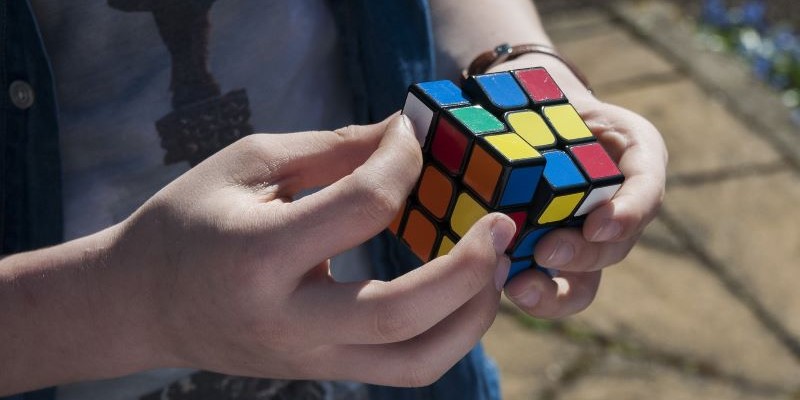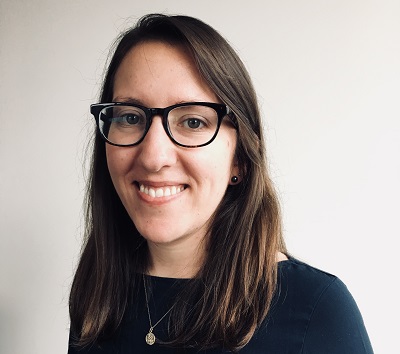Last fall, I argued that school districts ending police contracts won’t change students’ experience of discipline by swapping in new hires. In such a solution, students—especially Black, Indigenous, and students of color—remain objects within a discipline system whose purpose is to control their behavior.
Instead, schools working to change student experiences of discipline will get more mileage by reframing every young person as a resource that contributes to building and maintaining a positive and safe learning environment. That shift depends not only on recognizing the assets that students bring to the table, but on creating new ways to activate those assets. After all, new processes change what schools can accomplish far more than new resources alone.
To dig into the roles students play in a radically different approach to discipline, I caught up with Jody McVittie (Co-Founder) and Stacy Lappin (Director of Program) from Sound Discipline, a nonprofit in Washington state that partners with schools and districts to support comprehensive and resilient cultural change in schools. Mostly, we spoke about Sound Discipline’s “whole school” partnerships, in which program staff work with teachers, administrators, and staff to foster solution-focused discipline, trauma-informed practices, social-emotional learning, and data-driven systemic change over a three-year commitment.
As you’ll see in our conversation, Jody and Stacy are quick to illustrate how new processes—including adult practices—are the keys to activating students as problem-solvers instead of problems to be solved.
Chelsea Waite: What roles do students play to enable Sound Discipline’s approach?
Stacy Lappin: When a kid has a problem with someone else, they’re going to talk it out, or put it on the class meeting agenda. Instead of “let me fix it for you,” we’re always trying to hand the issue back to the child. Even when a kid is brought into the principal’s office, the conversation goes, “You’re not bad or in trouble, but you are responsible and accountable, so how are you going to fix what happened with me to support you?” So that really is a different way of centering school on the kids, rather than on the adults or the system.
Jody McVittie: At a student panel once, someone asked, “What have you learned from [daily] class meetings?” And one of the fifth-graders said, “Well, I don’t remember all our solutions, but I think I could solve almost any problem.” It’s really about bringing it back to the kids over and over again, instead of the adults saying “This is the way it’s going to be.”
Lappin: It becomes expected in our schools, over time, that adults ask kids to help solve school problems, that adults care what kids say, and that kids know that.
Waite: I’m remembering in my elementary school that some students got a chance to be peer mediators to help resolve issues on the playground. They learned about I-statements and stuff like that. How is this different?
Lappin: The biggest difference is that everybody gets to do it. And when a school does create leadership opportunities or problem-solver helpers, we encourage them to look for the kids who are struggling the most. So rather than nominating the kids who have these skills already, it’s about identifying who would benefit from the opportunity to get more practice—let the kid struggling the most with self-regulation be your self-regulation leader. Or, it’s a rotating job that everyone performs.
McVittie: One of our schools had a couple groups of boys who were really struggling with self-regulation. After they trained them to be student ambassadors, those boys became the leaders of the playground. In the process, the boys developed skills that benefited their own development, and it totally changed the atmosphere on the playground.
Lappin: And it changes the educators’ perception of those kids. It also changes how the students see themselves and how their peers see them. It’s really powerful when those things happen.
Waite: Speaking of educators, what are they looking for from Sound Discipline?
Lappin: Often when schools come to us, they’re looking for the band-aid. “Fix these broken children.” “Make this stop.” But most of our work is putting a mirror up and pointing out issues in adult practice. We had a school say, “Your tools work for one or two kids, but what about when it’s 22 kids?” Well, when it’s 22 kids, it’s not a kid problem, it’s an educator problem. So we partner with schools, deeply, over time. We exert pressure and offer support. And at some point, the teachers in that school started saying, “We thought we got this for the kids, but this is actually a lot about us.” And I thought, “Now we’re in!”
McVittie: Lots of schools these days think they just need an SEL curriculum that will help the kids build their skills. That’s partly true, but we believe that it has to be everybody doing the work. It has to start with the adults.
Waite: It sounds like a boomerang. The goal is to hand problems back to kids to solve, but to do that, you have to work with adults to change their mindsets about what kids can do. What are the shifts that happen with adults in the school?
Lappin: Teachers shift from being managers to leaders. There’s a big difference. Classroom management is about the teacher being in control, but classroom leadership means being in community with young people, and creating space for them to voice what they say they need to learn and to be in community together. Then it’s about holding each other accountable, looking at what we agreed to and where it’s working and not.
McVittie: The adults in the school also begin to be reflective as a collective “we.” The school-based data teams we work with often don’t believe it when they begin seeing their work start to show results. But when the data shows that things are working, they start to say, “What other problems can we take on?” They become collective problem-solvers and they also begin to change how they choose a problem. Initially, choosing the problem is all about the kids that they see as responsible. Later they start to ask what’s going on in the environment that’s creating the problem. That change happens subtly.
Lappin: Another big shift is from discipline that’s punitive to discipline that’s restorative. That is a huge culture change, and depending on how you perceive your role as the leader of a school or a teacher, it can bring up a lot of difficult stuff. The shame and blame culture is so strong—the idea that the kid deserves punishment, and that punishment will shame them into being better.
McVittie: That whole mentality is harmful, particularly for kids who grew up with fewer resources, for kids who have darker skin or speak foreign languages, who come as immigrants, who have a disability. The transition is about how to build kids up and help them develop the necessary skills, rather than tearing them down and shaming them, and taking away their opportunities to learn in community.
Waite: Concretely, from a process and systems perspective, what changes make this possible?
McVittie: We use data all the time, and work with school-based data teams that are made up of grade-level representatives, classified staff, special education, administrators. Their job is to look at their data to identify a pattern, define a problem, and implement something. And we help them integrate student voice into that data and share it regularly, beyond just the data team.
Lappin: Twice a year, we work with school leaders to reflect on a “referral infrastructure checklist,” which examines the discipline structures a school has in place. Sometimes schools aren’t tracking referrals at all, and the meaning of a referral is a “gotcha,” a write-up—you’re going to the office. Over time, we work to shift to the idea that referrals are just information that helps us see what’s happening in our school. With that information in hand, we can see what systems aren’t working and what skills need further development.
McVittie: You’re going to have referrals because many kids experience so many barriers. It’s not that the kids can’t do it, it’s that they’ve had more barriers. And the system’s set up to exclude them.
Lappin: Another process we set up is an annual teacher self-assessment survey that measures perception of practice. We share that with schools so they can see their progress in shifting towards more trauma-informed, solution-focused practices. We also encourage teachers to adopt a daily class meeting, which is dedicated to problem-solving and skill-building.
Waite: How does technology play a role, if at all?
McVittie: States require that schools report their discipline data, but a lot of the systems that schools use are oriented towards sending data up. We needed a system that allowed teachers to see the data so they could make changes on the ground. The system we really love for data collection around discipline is put out by the University of Oregon, called “School-wide Information Systems (SWIS).” We also have our own internal way of collecting information from the teacher self-assessment and referral infrastructure checklist. Lastly, we are in the process of piloting a new strengths-based system for Multi-Tiered Systems of Support (MTSS). For the most part, MTSS has always been through a lens of what’s missing. We wanted to build a system that’s through the lens of assets and strengths so it’s oriented towards learning. We have a way of doing a screening that’s strengths-based and really visual for teachers.
Waite: And that assets-based MTSS screener is custom-built?
McVittie: Yes, we built it.
Waite: Before we close, anything else you want to add about the importance of this work?
McVittie: If we want young people to become resourceful, respectful members of our community, we actually have to begin thinking of school not as just a place for academic learning, but as a place where students can become who they can potentially be. Their human beingness has to come first.


